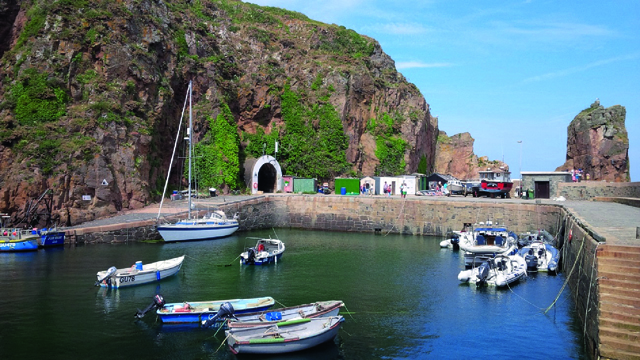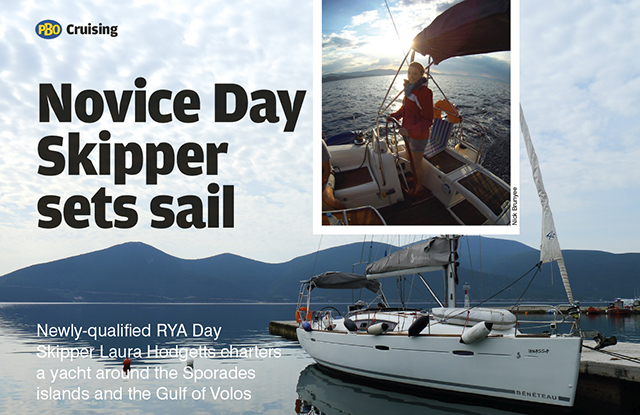PBO reader John Apps sails to St Helena, an island so full of superlatives he has to pinch himself to ensure he didn’t dream his visit
St Helena, in the middle of the tropical South Atlantic Ocean (16°S 5°W), styles itself as the most extraordinary place on Earth. And for the visiting yachtsperson, it is indeed anything but ordinary.
Technically, it is not the most remote place in the world in distance, being beaten by Easter Island which is 400 miles more distant than its nearest inhabited neighbour (1,100 miles to Pitcairn Island). There are 700 miles between St Helena and its nearest neighbour, Ascension Island, but unlike Easter Island St Helena has no airport.
The RMS St Helena, serving the British territories in the South Atlantic, takes two days to get from St Helena to Ascension with its airport links to the UK and the United States.
If you want to phone someone from your boat as you arrive, or send a text, you’ll find there is no mobile phone signal. So unless you have a satellite phone you’ll need to go ashore to contact loved ones on your arrival at the coin-in-the-slot payphone near the landing dock.
This remoteness and lack of mobile communications or ATMs seems to have created the friendliest people on Earth. It is quite extraordinary the number of times you’re greeted as you walk the streets of Jamestown.
I spent a week on St Helena, and felt that I had a whole community of new friends by the time I left. In some ways it is unfortunate that St Helena is so identified with being Napoleon’s island prison, which takes away from its importance as a great crossroads in the ocean.

Plaque commemorating Joshua Slocum’s visit
Before the opening of the Suez Canal it was a stopping place for almost every ship rounding the Cape of Good Hope or Cape Horn. The list of visitors is really a who’s who of famous sailors and explorers: my personal favourites are James Cook, Joshua Slocum and Thomas Cochrane.
St Helena is very easy to get to when going north in the South Atlantic with either the South East Trades as a following wind or on a broad reach, depending which of the capes you have rounded.
James Bay is the main anchorage and is found on the north-west side of the island directly adjacent to the main town, Jamestown.
Unless you have entered the anchorage previously, a night approach may be difficult. There is one major shipwreck close inshore which is exposed at low tide, and a large number of unlit boats in the main anchorage.
I was fortunate to arrive about two hours before sunset so I found pilotage quite simple. The port authority has provided a large number of oversize moorings which are free for the first night then £2 per night thereafter.
A ferry service is operated between 0630 and 1830 each day and costs just £1 each way, which you pay at the end of your stay.
The ferry operator, like everyone on St Helena, is very accommodating. I was invited for drinks at Donny’s Bar after work one day and the ferry operator offered a late pick-up for me to take me back to my boat so that I didn’t have to rush.
Of course you can use your own dinghy to get ashore, but quite a swell runs into the bay: it is much easier to leap from a stable ferry platform than to do so from an inflatable while trying to hang onto a painter.
A place of superlatives

St James, oldest Anglican Church in the Southern Hemishpere
St Helena is said to be Britain’s second-oldest colony, and St James’ Church lays claim to being the oldest Anglican church in the southern hemisphere. Similarly, the prison is reputedly the oldest working prison south of the equator.
Jonathan, a land tortoise, is thought to be the world’s oldest living land animal (aged 183!), while the wire bird, a species of plover, is claimed to be the rarest of the world’s endangered species.
Wonderful weather

Castle Gardens, coolest place on a hot afternoon
Best of all is the climate. I was there in December, which is summer in the southern tropics, and found the temperature almost perfect. Being the South Atlantic, tropical revolving storms such as hurricanes, cyclones or typhoons are almost unknown.
The only time I found the heat a little warm was mid-afternoon on board my boat, when I would go ashore and use the free tepid shower at the landing place and spend an hour or so in the cool of the castle gardens.
I did climb Jacob’s Ladder early one morning which raised a sweat, as it’s 699 steps up to Ladder Hill Fort.
St Helena is one of those places that makes me have to pinch myself to believe that I have actually been there in my own boat. While I would classify it in my ‘once in a lifetime experiences’, I have a great desire to go back.
Wonderful people, great weather, safe anchorage – what more do you want when you are moored?
ABOUT THE AUTHOR

John Apps
John Apps has completed two single-handed Jester Challenges to the US and two Jester Azores Challenges in his UFO27 Glayva.
This Cruising Notes article was published in the July 2015 issue of PBO. For more useful archive articles explore the PBO Copy Service.
Share your cruising notes!
We pay for your published cruising stories. Email pbo@timeinc.com or write to PBO magazine, Westover House, West Quay Road, Poole, BH15 1JG.
Cruising Notes: Canny Canna
Charmian Entwistle recommends a visit to the Isle of Canna, a handy stop-off en route to or from Skye or…
Cruising Sark – one couple’s guide for PBO
John and Yvonne Robinson put the spotlight on popular anchorages and moorings around Sark
Cruising to Brittany and the Channel Islands in a 21ft yacht
Carlton Douglas takes his 21ft Westerly Jouster for a fortnight’s cruise to Brittany and back, with stops in St Helier…
Cross-Channel cruising with a pet cat
With a summer holiday being firmly rooted in the French canals, Richard Hare agreed to have the family cat aboard.…
Refit a racer for cruising
Eighteen months after winning the 2009 OSTAR in his Sigma 33C, Elmarleen, Will Sayer talks to Ben Meakins about his…
Why you should race your cruising boat
Ben Meakins finds out why – and how – PBO readers from around the UK go racing in their cruising
New Greek tax for British cruising sailors – ‘fairer and more workable’ than feared
A new Greek tax affecting thousands of British boat owners in Greece has moved a step nearer to being introduced,…
Eastern Mediterranean cruising update – regarding the migrant crisis
The Cruising Association has issued an Eastern Mediterranean overview, and urges sailors not to be deterred from these waters by…
How to sail to Australia from the UK in a small boat
Kate and Jonny Harrison dreamed of a round-the-world backpacking tour to Australia – but then their plans took a nautical
Novice Day Skipper sets sail
Newly-qualified RYA Day Skipper Laura Hodgetts charters a yacht around the Sporades islands and the Gulf of Volos
Cooking on board – two tasty recipes
Chef David Wells shares two recipes to show how tasty, inventive dishes can be prepared on just one or two…














